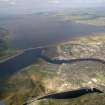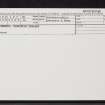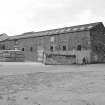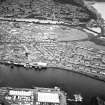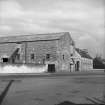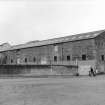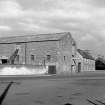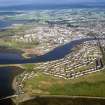Pricing Change
New pricing for orders of material from this site will come into place shortly. Charges for supply of digital images, digitisation on demand, prints and licensing will be altered.
Inverness, Thornbush Road, Thornbush Brewery
Boom Defence Depot (First World War), Brewery (Period Unassigned), Warehouse (Period Unassigned)
Site Name Inverness, Thornbush Road, Thornbush Brewery
Classification Boom Defence Depot (First World War), Brewery (Period Unassigned), Warehouse (Period Unassigned)
Alternative Name(s) Doom Defence Depot
Canmore ID 13342
Site Number NH64NE 127
NGR NH 65900 46600
Datum OSGB36 - NGR
Permalink http://canmore.org.uk/site/13342
- Council Highland
- Parish Inverness And Bona
- Former Region Highland
- Former District Inverness
- Former County Inverness-shire
NH64NE 127 65900 46600
Warehouse [NAT]
OS (GIS) MasterMap, September 2010.
Architect: Alexander Ross (I.A. Nov. 29, 1867) Additions
Kiln:
Architect: Alexxander Road (I.C. May 27, 1880)
Malthouse:
Architects: Ross & Macbeth (I.C. Nov. 19, 1895)
A large eight-bay, two storey and attic structure with roof lighting and second-storey and attic hoists. There are modern one and two-storey extensions, presumably relating to later use as a seed and fertiliser store.
(Undated) information in NMRS.
(Location cited as NH 658 467). Thornbush Brewery, mid 19th century. A 2-storey and attic, 2- by 8-bay rubble building, with 1- and 2-storey extensions, now a seed and fertilizer store.
J R Hume 1977.
Note (6 October 2014)
Located in the former brewary was the site of the Thornbush Boom Defence Works, which constructed and maintained booms for naval anchorages across Northern Scotland. The works also included part or all of the quay and slipway at Thornbush. The boom system was the result of the work of two men, Captain Munro, Cromarty Firth Harbour master and Mr Sam Hunter Gordon of the Rose Street Foundry, Inverness, who at the outbreak of the First world War developed the boom. The system was rapidily adopted by the Royal Navy and Thornbush operated from just after the start of the war until the end. The workforce comprised mostly women, c.120 women were employed at the works.
Information from RCAHMS (AKK) and Inverness Field Club 6 Ovtober 2014.














